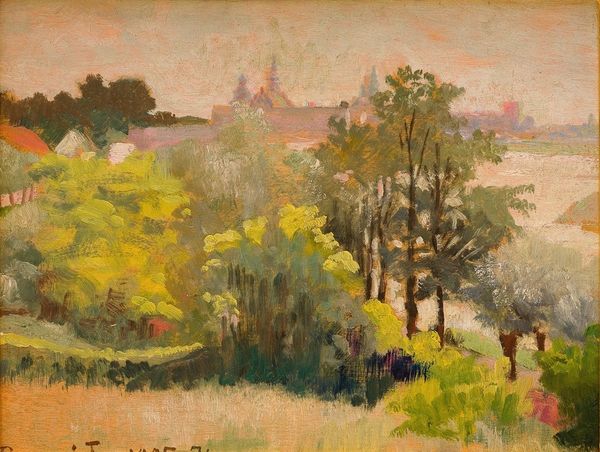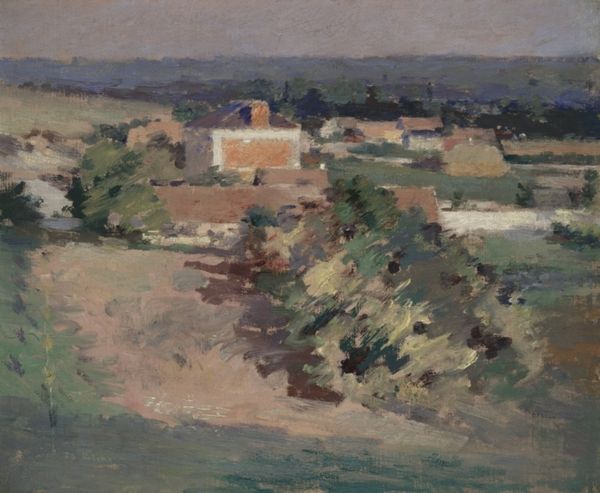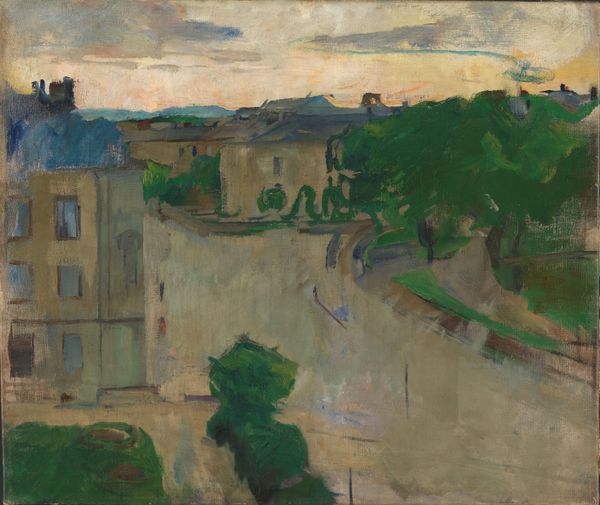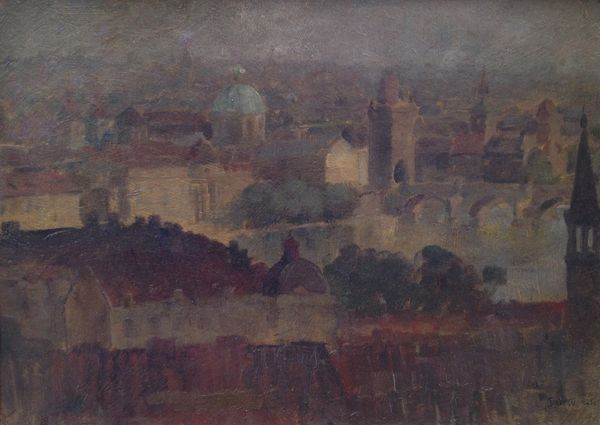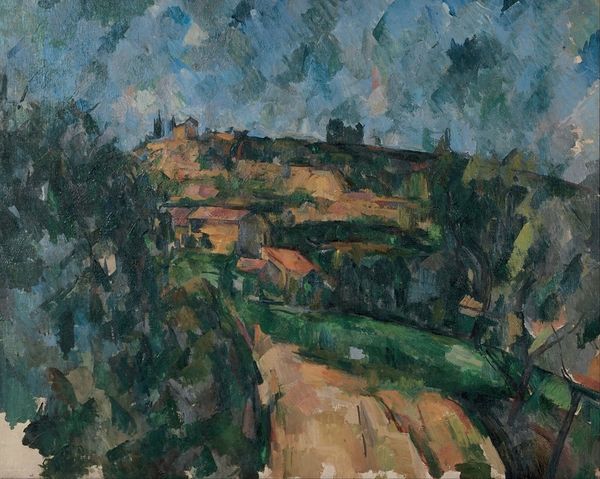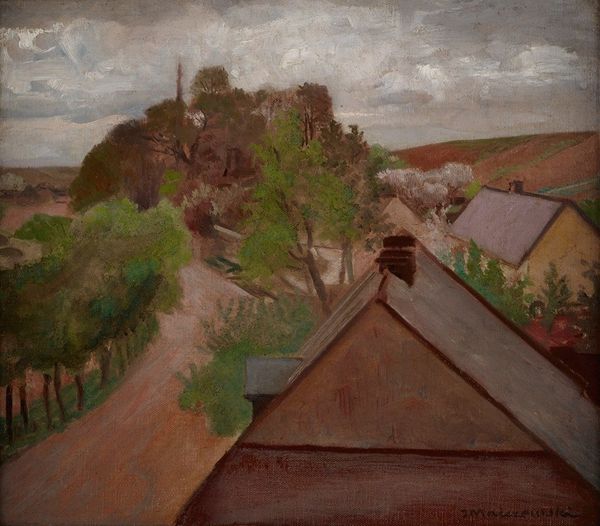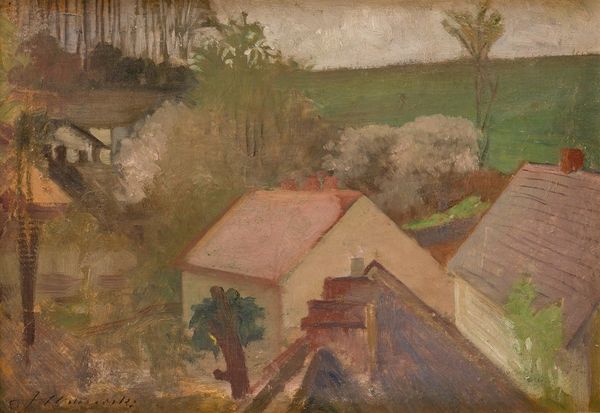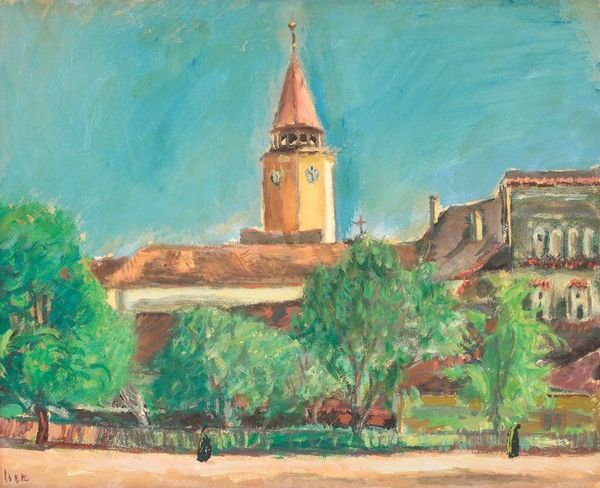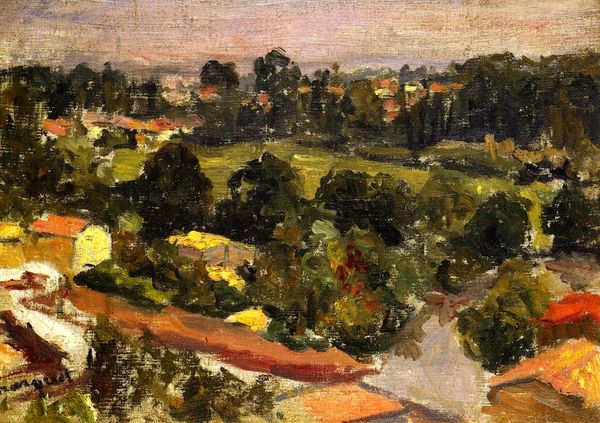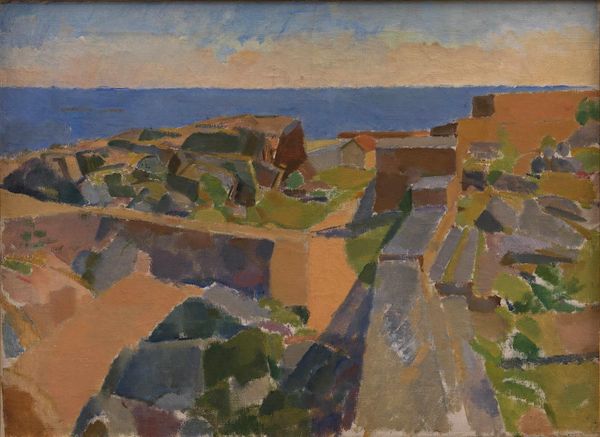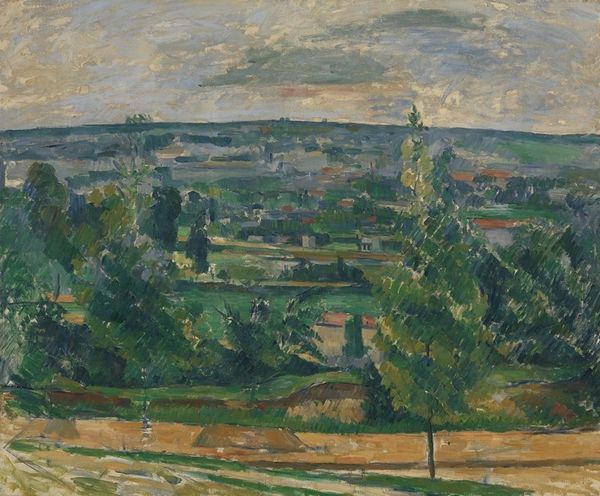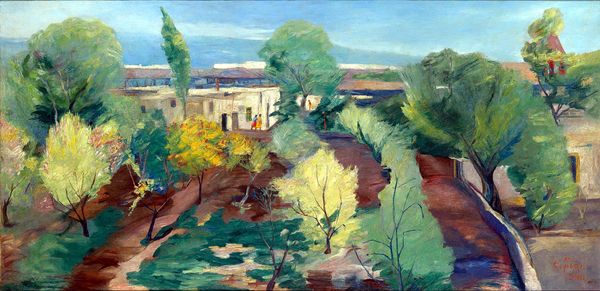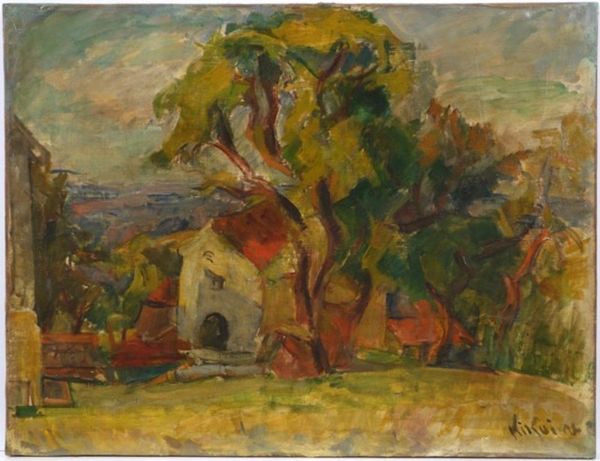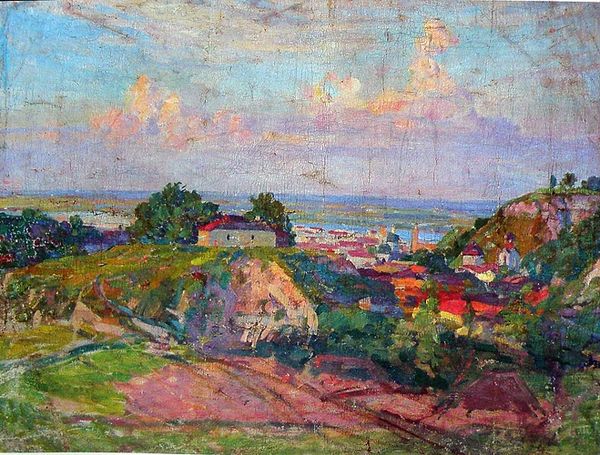
Dimensions: 32 cm (height) x 39.5 cm (width) (Netto), 45.8 cm (height) x 54.2 cm (width) x 5.2 cm (depth) (Brutto)
Editor: We are looking at "Village in Brittany," an 1892 oil painting by G.F. Clement, housed here at the SMK. The brushstrokes seem so relaxed, but it gives the town a very closed-in, almost claustrophobic feel. What stands out to you in this work? Curator: What is most immediately apparent is the structure itself. The painting operates with a compressed verticality, doesn’t it? See how the picture plane appears to push the buildings upward, minimizing the sky and thus intensifying that feeling you astutely observed? Note, also, how the artist eschews linear perspective. Editor: I do, it's almost like the village is stacked instead of spread out. How does that affect our understanding? Curator: Precisely! The emphasis on the surface, devoid of deep recession, directs our focus toward the materiality of the paint and the interplay of colors. Observe how Clement juxtaposes the muted greys and browns of the rooftops with the verdant greens of the trees. What is the result? Editor: It makes the colours compete. But the grey feels dominant? Even oppressive, in a way? Curator: Indeed. And note the composition itself. The centralization of the church spire draws our eye upwards. Consider the semiotic weight: the village pivots and orients around the church as a point of centralization and control. Editor: That's interesting; it really changes my view of what felt like just a stylistic choice. Curator: It prompts us to reconsider our initial response. The aesthetic experience of the subdued palette and compressed space is inextricably linked to the composition's symbolic structure. A powerful integration, wouldn’t you agree? Editor: I do. Thanks! It gave me a lot to think about.
Comments
No comments
Be the first to comment and join the conversation on the ultimate creative platform.
